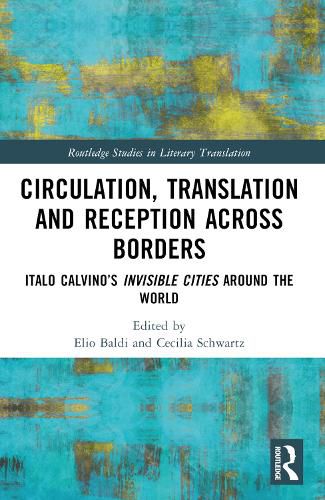Readings Newsletter
Become a Readings Member to make your shopping experience even easier.
Sign in or sign up for free!
You’re not far away from qualifying for FREE standard shipping within Australia
You’ve qualified for FREE standard shipping within Australia
The cart is loading…






This volume offers a detailed analysis of selected cases in the reception, translation and artistic reinterpretation of Italo Calvino's Invisible Cities (1972) around the world.
The book traces the many different ways in which Calvino's modern classic has been read, translated and adapted in Brazil, France, the Netherlands and Flanders, Mexico, Romania, Scandinavia, the USSR, China, Poland, Japan and Australia. It also offers analyses of the relation between Calvino's book and, respectively, the East and Africa, as well as reflections on the book's inspiration for, and resonance in, dance, architecture and art. The volume thus traces the diversity in the reception and circulation of Invisible Cities in different countries and continents, offering a much wider framework for the discussion of Calvino's masterpiece than before, and a more detailed picture of its cultural and linguistic ramifications.
This book will be of interest to scholars in Comparative Literature, World Literature, Translation Studies, Italian Studies, Romance Languages, European Studies, Dance, Architecture and Media Studies, as well as to scholars specialised in paratext and reception.
$9.00 standard shipping within Australia
FREE standard shipping within Australia for orders over $100.00
Express & International shipping calculated at checkout
This volume offers a detailed analysis of selected cases in the reception, translation and artistic reinterpretation of Italo Calvino's Invisible Cities (1972) around the world.
The book traces the many different ways in which Calvino's modern classic has been read, translated and adapted in Brazil, France, the Netherlands and Flanders, Mexico, Romania, Scandinavia, the USSR, China, Poland, Japan and Australia. It also offers analyses of the relation between Calvino's book and, respectively, the East and Africa, as well as reflections on the book's inspiration for, and resonance in, dance, architecture and art. The volume thus traces the diversity in the reception and circulation of Invisible Cities in different countries and continents, offering a much wider framework for the discussion of Calvino's masterpiece than before, and a more detailed picture of its cultural and linguistic ramifications.
This book will be of interest to scholars in Comparative Literature, World Literature, Translation Studies, Italian Studies, Romance Languages, European Studies, Dance, Architecture and Media Studies, as well as to scholars specialised in paratext and reception.